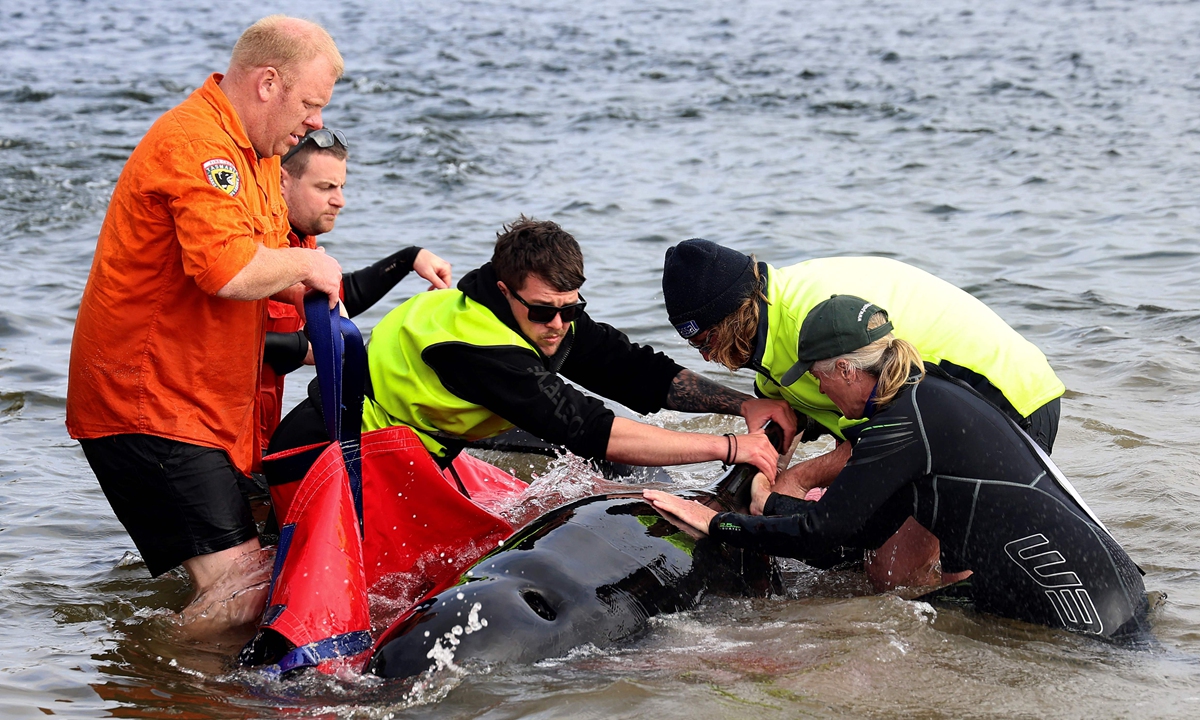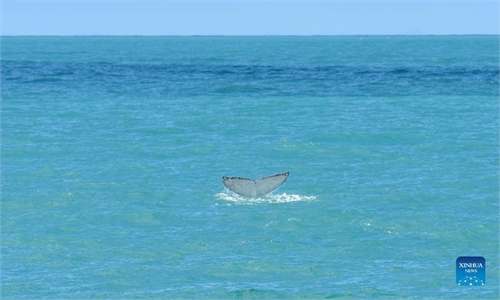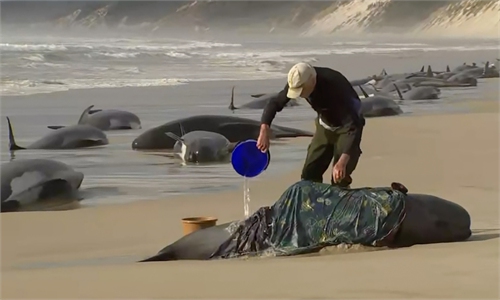Almost 200 pilot whales perish on Australian beach

Rescuers release a stranded pilot whale back in the ocean at Macquarie Heads, on the west coast of Tasmania, Australia on September 22, 2022. Photo: VCG
Almost 200 whales have perished at an exposed, surf-swept beach on the rugged west coast of Tasmania, where Australian rescuers were only able to save a few dozen survivors on Thursday.After an arduous, daylong effort in difficult conditions, state wildlife services said just 32 of the 226 beached long-finned pilot whales were strong enough to be rescued.
"We've been refloating those whales that have been deemed suitable for release back to sea," Sam Thalmann, a marine biologist, told AFP.
"Every whale that has been released has been tagged," he said. "There may be a few that restrand unfortunately, but we expect that by far the majority will head out to sea."
Locals had covered some of the mammals with blankets and doused them with buckets of seawater to keep them alive until more help arrived. But many of the whales were too far gone.
By nightfall, scores of the glossy black whales were strewn along Ocean Beach, their carcasses pock-marking the waterline where the frigid southern ocean meets the sand.
"Unfortunately we do have a high mortality rate on this particular stranding," said state wildlife operations manager Brendon Clark.
"The environmental conditions, the surf out there on the exposed west coast, Ocean Beach, is certainly taking its toll on the animals."
Efforts will now turn to the considerable task of disposing of the whale bodies safely.
If left in shallow waters or on the beach, they could attract sharks and can carry disease.
"There is a lot more work to be done with the carcass disposal," said Thalmann, who added that "valuable biological samples" would need to be collected from the animals.
Those could help scientists understand how and why "the animals strand at this location."



